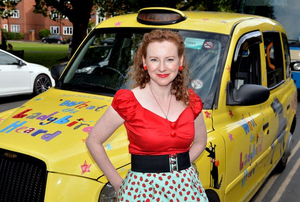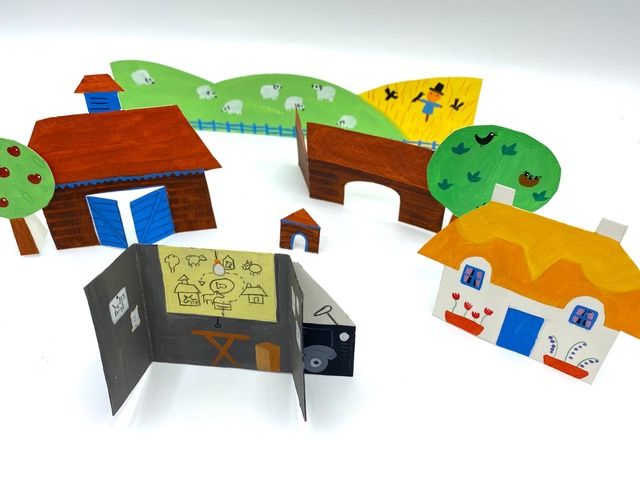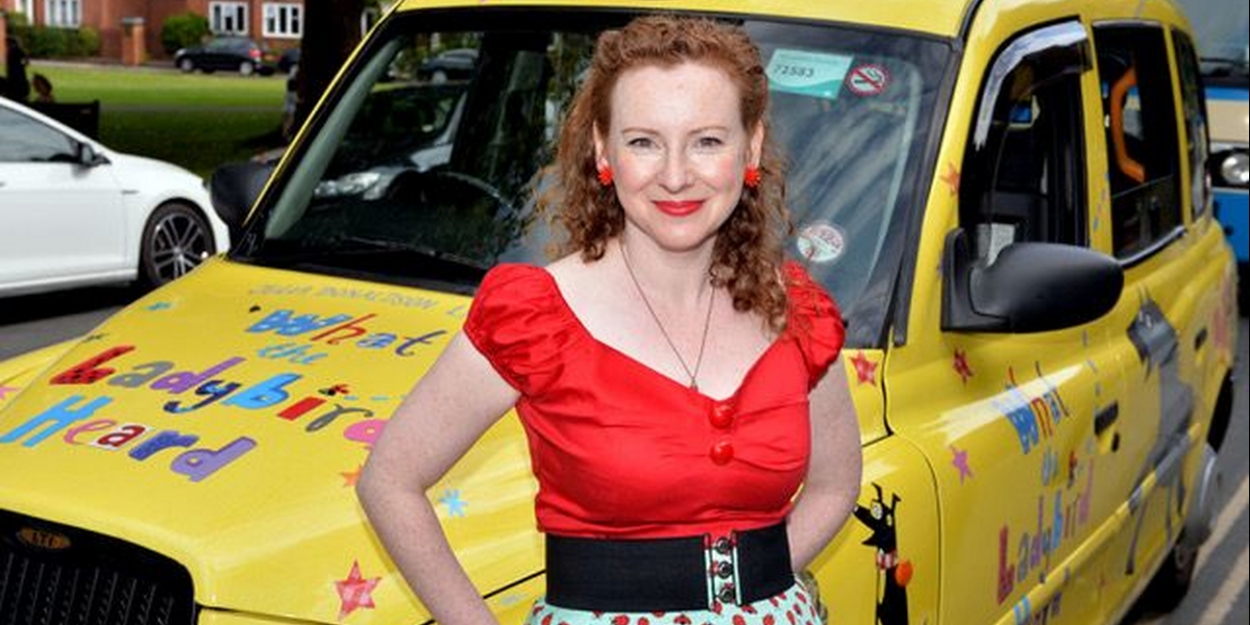
What the Ladybird Heard was first brought to the West End in 2017, marking a theatrical perch for the hugely popular sequence of picture books created by the writer Julia Donaldson and the illustrator Lydia Monks; to date, there have been four instalments in the Ladybird series. The stage adaptation from director Graham Hubbard is back on the West End this summer to be followed by a UK tour, with Monks once more on board as design consultant. The bestselling illustrator here discusses what it has been like to bring her creations to three-dimensional life.
I was delighted when I heard that Kenny Wax was developing our book, What the Ladybird Heard, into a show. I was even more excited when he asked me to be take part in the development process. I'd never collaborated with theatre before, but it's something I'd always wanted to do. It was slightly intimidating, as I'm used to sitting on my own at my desk colouring-in for days on end, so to be working with other creatives was a little bit daunting: A whole new world, to quote another famous musical!
Kenny was very keen to keep the show looking like the illustrations, so that the audience would feel as if they were stepping inside the book itself; the visuals had to be familiar. That aspect is relatively easy to do. The trickier thing about adapting a picture book into a show is lengthening the story. A picture book can be read in about three minutes, which somehow had to be stretched to sixty minutes without losing the integrity of the story. Also, the audience are so young that it's hard to get them to sit still for any length of time. A mixture of action and songs seemed the way forward.
Another issue was the number of characters, which extends to ten farm animals, two robbers, a farmer, a policeman and the ladybird - quite a handful for four actors. The team had to come up with a cunning plan to cope with all these animals on stage at the same time. Kenny had an idea about starting the show with an announcement to say that some of the animals had been delayed and couldn't make the show and the actors would have to improvise. They could make animals out of bits and bobs they might find on a farmyard. Bek Palmer, the designer, came up with some brilliant ideas: a sheep made from a woolly coat and and handle bars, the hairy hog made from a barrel, and a goose made from a watering can.
The result was a bit like how children might make their own show. They are used to making things up, and their imaginations are set to believe that a bicycle can become a horse. These make-do animals were complemented by some beautifully made puppets of the fine prize cow and the two cats. I remember discussions about how the two cats should be like Statler and Waldorf from The Muppet Show, constantly passing comment on the action on stage.
I was even invited to sit on the meetings about the songs and music. Jon Fiber and Andy Shaw came in with their ideas which they would try out on us, and there would be a bit of brainstorming. They had to be songs that were easy for the children to pick up quickly so they could join in, with some actions thrown in for good measure. Some of the songs will stay in my head forever.
Only when rehearsals started did the whole thing start to come together, and there was a lot to try out. The making of the animals on stage had to be practiced, and adjustments had to be made. It was like an episode of Blue Peter, trying to make something live on stage without any bits going missing or falling off. There were lots of bits that could go wrong, so they had to be practiced to perfection under the direction of Graham Hubbard.

After months of preparation, the show opened at the Richmond Theatre, and everyone seemed to enjoy themselves. I came along and did a live drawing session for the children afterwards. It was lovely to see the production before it went off on tour around the world, and when I caught up with it again a few months later, little changes had been made as the production grew and settled into itself. Our live version adds another dimension to the piece. The characters have more of a chance to develop. Hefty Hugh and Lanky Len steal the show far better than they steal the cow! The music and the sing-along songs allow the children to be part of the action, and meanwhile, the little ladybird never says a word.
I'm looking forward to seeing it this year with the new cast, to see what they bring to the material. All our children have been a little bit cooped up all year with not much variety - so much time on screens, and not much chance to experience anything new. Quite often, these shows are their first visit to the theatre and provide an important introduction that can have a lasting influence on their lives; this is not something they get to experience much these days, with drama provision (and the arts in general) being sidelined in state schools.
That link between reading a story and then seeing it brought to life is a magical experience for everyone, no matter their age. After such a difficult year for theatre, to see our show up and running again will be a true celebration, and I will definitely be singing along to the songs!





